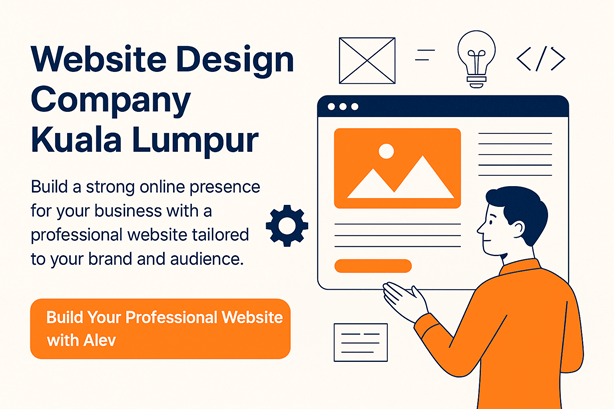E-Commerce has revolutionized the way products reach consumers, making it crucial for you to adapt your packaging strategy accordingly. In this post, you’ll discover how to optimize your packaging to effectively appeal to both retail and online customers, ensuring your products stand out whether on a store shelf or displayed on a digital screen. We’ll explore key considerations for design, durability, and sustainability that enhance customer experience and drive sales in both channels. Let’s examine how to bridge the gap between physical and digital shopping experiences through smart packaging solutions.
The Dual Demands of Retail and E-Commerce Packaging
Balancing the requirements of retail and e-commerce packaging can be a complex endeavor. Retail packaging must grab attention on the shelf, standing out among competitors, while e-commerce packaging needs to ensure product security during transit. You face the challenge of creating a unified packaging strategy that meets the distinct needs of both channels, appealing to customers whether they’re shopping in-store or online.
Packaging for Store Shelves: Captivating Design and Usability
Your retail packaging should entice customers from afar, using bold colors, innovative shapes, and eye-catching graphics. This visual impact can significantly influence purchasing decisions. Additionally, usability plays a vital role; easy-to-open packages enhance the customer experience, encouraging repeat purchases. Integrating informative elements, like QR codes or clear product benefits, can further engage shoppers, bridging the gap between aesthetics and functionality.
Optimizing for E-Commerce: Transport Security and Cost Efficiency
Effective e-commerce packaging prioritizes product protection without compromising cost efficiency. Using materials like corrugated cardboard not only protects items during transport but also offers a lightweight solution that minimizes shipping costs. Consider incorporating right-sized packaging to cut excess space, reducing the chance of damage and saving on shipping fees. Sustainable options, like biodegradable materials, can also enhance your brand’s appeal in a market that increasingly values eco-friendliness.
To optimize your e-commerce packaging, examine the transition from retail to online fulfillment closely. A study found that nearly 40% of online returns stem from improper packaging, highlighting the need for secure product containment. By adopting a design that snugly fits your product, you can enhance stability during transport, making items less susceptible to damage. Additionally, incorporating cushioning elements like air pillows or biodegradable peanuts not only protects your products but can also impress your customers with a thoughtful unboxing experience. Ultimately, striking the right balance between security, cost, and sustainability can give you a competitive edge in the e-commerce landscape.
Crafting the Ultimate Unboxing Experience
Creating an unforgettable unboxing experience can significantly enhance customer satisfaction and brand loyalty. Tailor your packaging to not only protect the product but also engage the senses. Consider the use of textures, colors, and even sounds that resonate with your brand identity. For example, a high-end skincare line may use soft-touch materials and soothing color palettes to evoke luxury, while a quirky tech gadget might embrace bold colors and intricate designs that reflect innovation. The goal is to create a moment of joy and surprise as customers unveil their purchases.
The Emotional Impact of First Impressions
First impressions form within seconds, and your packaging plays a pivotal role in this critical moment. Customers often engage emotionally with brands that reflect their values and aesthetics. A well-crafted unboxing experience not only excites the customer but also reinforces their decision to purchase your product. Incorporating personalized touches, such as handwritten notes or branded stickers, can elevate the emotional connection, turning what could be a mundane task into a memorable ritual.
Sustainable Practices in Unboxing
Embracing sustainable practices in your unboxing experience not only appeals to eco-conscious consumers but also strengthens your brand’s reputation. Using recyclable, biodegradable, or reusable packaging materials reduces environmental impact and resonates deeply with today’s consumers who prioritize sustainability. For instance, brands implementing minimalistic designs that eliminate excess waste while using responsibly-sourced materials find they can maintain style without compromising their ideals.
Shifting towards eco-friendly packaging solutions can mean a considerable improvement in your brand image, especially as consumers become increasingly aware of environmental issues. According to a recent study, over 70% of consumers are willing to pay a premium for products that come in sustainable packaging. Utilizing materials like recycled cardboard, compostable void fill, or plant-based inks can reduce your carbon footprint while adding value to the unboxing experience. Not only does it align with consumers’ environmental values, but it can also stimulate interest and loyalty, as more shoppers advocate for brands that prioritize sustainability. Providing a transparent message about your sustainable efforts reinforces consumer trust and builds a community around shared values.
Packaging Materials: Weighing Functionality Against Sustainability
Your choice of packaging materials significantly impacts both product protection and environmental footprint. While durability is important to ensure your product survives transit, eco-friendliness is becoming an equally important selling point. Audiences are increasingly drawn to brands that prioritize sustainable practices. For insights into optimizing this balance for e-commerce, explore Digital Shelf Optimization: How to Win in E-Commerce.
Choosing the Right Materials for Visual Appeal and Durability
The Rise of Eco-Friendly Alternatives in Product Packaging
The Role of Technology in Modern Packaging Solutions
Technology plays a transformative role in packaging design and functionality, shifting focus toward efficiency, sustainability, and consumer engagement. Advanced software solutions enable you to create customized packaging that meets specific requirements, while cutting-edge printing technology facilitates high-quality graphics that stand out on both retail shelves and online platforms. Enhanced materials scanning systems improve inventory management, ensuring that packaging solutions evolve alongside consumer preferences. This technological integration equips your brand with the agility to adapt to changing market demands swiftly.
Innovations: Smart Packaging and QR Codes
Smart packaging innovations, including QR codes and NFC (Near Field Communication), enhance consumer interaction and provide valuable product information. By integrating these technologies, you allow customers easier access to product details, enhancing transparency and supporting informed purchasing decisions. For instance, a QR code on your package can lead to a video demonstration or recipe, creating an engaging experience that fosters brand loyalty and encourages repeat purchases.
The Future of Automation in Packaging Processes
The future of automation in packaging processes holds promise for efficiency, precision, and cost savings. Automated packaging lines are increasingly being adopted, allowing you to streamline operations, reduce manual labor, and minimize errors. Implementation of robotics and machine learning makes it feasible to adapt packaging designs quickly in response to fluctuating market needs, all while maintaining high quality. Properly integrated automation can reduce time-to-market significantly, enhancing your competitive edge in an ever-evolving landscape.
Investing in automation goes beyond efficiency; it can reshape the way you approach product packaging altogether. Automated systems provide data insights that assist in refining packaging design and material usage, reducing waste and aligning with sustainability goals. The integration of AI with robotics allows for rapid prototyping and the ability to test various packaging solutions simultaneously, giving your brand the leverage to innovate continuously. As packaging technologies progress, expect to see even smarter systems, capable of adjusting packaging speed and size based on real-time demand and inventory levels.
Balancing Brand Identity with Practicality
Striking a balance between brand identity and practical packaging solutions is imperative for standing out in a crowded market. You want your packaging to resonate with consumers while also serving its primary function—protecting the product. This requires a thoughtful approach, incorporating elements like distinctive colors, logos, and typography that encapsulate your brand’s essence without compromising usability or customer experience.
How Packaging Reflects Brand Values
Your packaging is often the first tangible interaction consumers have with your brand, so it must convey your core values. Eco-friendly materials can signal your commitment to sustainability, while innovative designs might showcase your drive for creativity. Effective packaging becomes a silent ambassador for your brand, ensuring customers feel aligned with your mission from the moment they unbox your product.
Avoiding the Pitfalls of Compromised Design for Function
Focusing solely on aesthetics can lead to impractical designs that fail in functionality. Excessively ornate packaging might delight the eye but struggle to protect the product, resulting in costly returns and dissatisfied customers. Your goal should be to ensure the design aligns with practical applications, safeguarding your product while enhancing consumer perception.
Avoiding pitfalls associated with compromised design necessitates a comprehensive understanding of both your brand ethos and user requirements. For instance, complex unboxing experiences may initially attract customers but can quickly turn frustrating if not executed thoughtfully. Functional yet visually appealing designs can include features like easy-open tabs or protective cushioning that doesn’t sacrifice style. Continuous testing and feedback loops allow you to refine packaging, ensuring it not only amplifies brand appeal but also meets consumer expectations for usability and protection. Investing time and resources into this balance pays off in the long run through improved customer satisfaction and brand loyalty.
Conclusion
From above, it’s clear that optimizing your packaging for both retail and e-commerce can enhance your product’s visibility and effectiveness in diverse shopping environments. By focusing on design, materials, and functionality, you can appeal to consumers whether they’re in-store or shopping online. This approach not only boosts the overall customer experience but also streamlines shipping and reduces waste. Ultimately, investing in targeted packaging strategies will improve your brand image and profitability, enabling you to thrive in today’s competitive marketplace.






